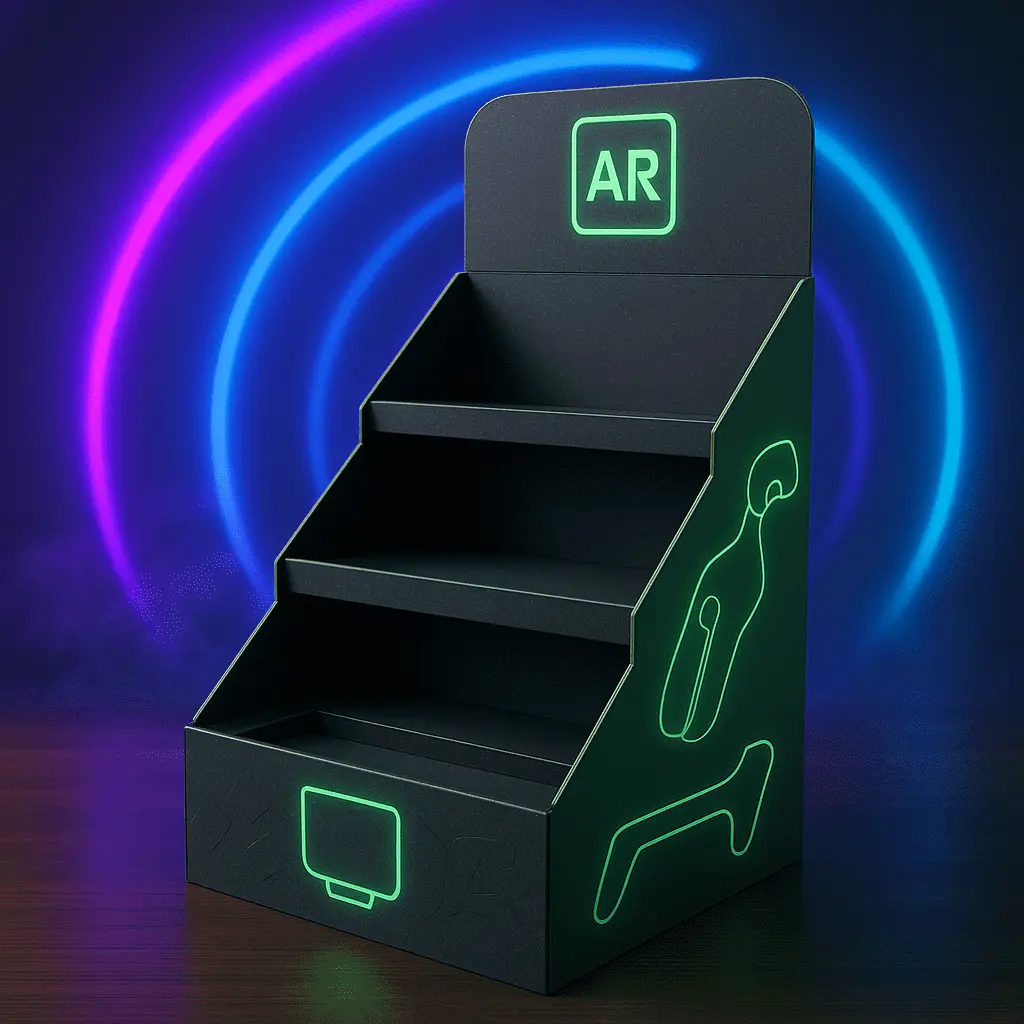PDQ Display Minimum Order Quantity Strategies
PDQ display minimum order quantity strategies are crucial for businesses looking to optimize their point-of-purchase marketing efforts. These strategies involve balancing cost-effectiveness with brand visibility and retail space utilization. By implementing smart minimum order quantity (MOQ) approaches, companies can ensure they're meeting retailer requirements while maintaining profitability. Effective PDQ display strategies often include tiered ordering options, seasonal adjustments, and collaborative planning with suppliers. This approach allows businesses to maintain flexibility in their marketing efforts while ensuring they have sufficient inventory to meet demand without overstocking.

Optimizing PDQ Display Order Quantities for Maximum Impact
Understanding PDQ Display Dynamics
PDQ displays, or "Pretty Darn Quick" displays, are essential tools in the retail marketing arsenal. These point-of-purchase units are designed for rapid setup and immediate product visibility. Understanding the dynamics of PDQ displays is crucial for developing effective minimum order quantity strategies. These displays often have a limited lifespan, typically lasting for a specific promotion or season, which influences the quantity needed for each order.
The effectiveness of PDQ displays lies in their ability to capture consumer attention and drive impulse purchases. However, their temporary nature means that businesses must carefully consider the quantity ordered to avoid excess inventory or stockouts. Factors such as store size, product turnover rate, and promotional duration all play a role in determining the optimal order quantity.
Analyzing Sales Data for Informed Decision-Making
To develop robust PDQ display minimum order quantity strategies, businesses must leverage their sales data effectively. Historical sales information, coupled with predictive analytics, can provide valuable insights into expected demand. This data-driven approach allows companies to tailor their order quantities to specific store locations, seasons, or promotional events.
By analyzing past performance of similar displays or products, businesses can identify trends and patterns that inform future ordering decisions. This might include recognizing peak sales periods, understanding the impact of various promotional strategies, or identifying regional variations in product popularity. Such insights enable more accurate forecasting and help in establishing minimum order quantities that balance cost and demand effectively.
Implementing Flexible MOQ Policies
Flexibility is key when it comes to PDQ display minimum order quantities. Implementing adaptable MOQ policies allows businesses to respond to changing market conditions and retailer needs. This might involve offering tiered ordering options, where retailers can choose from different quantity brackets with corresponding price points. Such an approach provides incentives for larger orders while still accommodating smaller retailers or those with limited space.
Another aspect of flexible MOQ strategies is the consideration of product mix within PDQ displays. By allowing retailers to customize the product assortment within a set minimum quantity, businesses can cater to local preferences and maximize the display's effectiveness. This customization can lead to higher sell-through rates and increased retailer satisfaction, potentially encouraging larger future orders.
Collaborative Planning and Forecasting for PDQ Display Success
Strengthening Supplier Relationships
Successful PDQ display strategies often hinge on strong relationships with suppliers. Collaborative planning with manufacturers or distributors can lead to more efficient production schedules and inventory management. By sharing forecasts and promotional calendars with suppliers, businesses can negotiate more favorable minimum order quantities and potentially secure priority production slots during peak seasons.
This collaborative approach also opens up opportunities for innovation in display design and functionality. Suppliers may be more willing to invest in custom solutions or new materials when they have a clear understanding of a business's long-term PDQ display strategy. Such partnerships can result in unique, eye-catching displays that set products apart from competitors and justify larger minimum order quantities.
Leveraging Technology for Accurate Forecasting
Advanced forecasting tools and technologies play a crucial role in optimizing PDQ display minimum order quantities. Machine learning algorithms can analyze vast amounts of data, including historical sales, market trends, and even external factors like weather patterns or economic indicators. These insights enable businesses to make more accurate predictions about demand, reducing the risk of over-ordering or understocking.
Real-time inventory tracking systems can also contribute to more effective PDQ display strategies. By monitoring stock levels and sales velocity across different locations, businesses can adjust their minimum order quantities dynamically. This agility allows for rapid response to unexpected demand spikes or slower-than-anticipated sales, ensuring that PDQ displays remain well-stocked and effective throughout their intended lifespan.
Seasonal and Event-Based MOQ Adjustments
Seasonal variations and special events significantly impact the effectiveness of PDQ displays. Savvy businesses adjust their minimum order quantity strategies to align with these fluctuations. For instance, holiday-themed displays may require larger minimum orders to ensure sufficient stock throughout the peak season. Conversely, off-season promotions might benefit from lower MOQs to avoid excess inventory.
Event-based adjustments to MOQs can also be highly effective. For example, a business might increase its minimum order quantity for PDQ displays featuring products tied to a major sporting event or movie release. By aligning order quantities with anticipated spikes in consumer interest, businesses can maximize the impact of their displays while minimizing the risk of overstocking.
Sustainable Practices in PDQ Display Ordering
Eco-Friendly Materials and Design
As sustainability becomes increasingly important to consumers and retailers alike, incorporating eco-friendly practices into PDQ display strategies is crucial. This includes considering the materials used in display construction and the overall environmental impact of production and disposal. Minimum order quantity strategies should take into account the use of recyclable or biodegradable materials, which may influence production costs and order sizes.
Innovative design approaches can also contribute to sustainability while potentially affecting minimum order quantities. For instance, modular PDQ displays that can be easily reconfigured for different products or promotions may justify larger initial orders due to their versatility and extended usability. Similarly, displays designed for easy disassembly and recycling may be more attractive to environmentally conscious retailers, potentially leading to increased order volumes.
Optimizing Transportation and Logistics
Transportation efficiency is a key consideration in PDQ display minimum order quantity strategies. Larger orders may benefit from economies of scale in shipping, reducing per-unit costs and environmental impact. However, this must be balanced against storage capabilities and the risk of obsolescence. Smart logistics planning, such as coordinating deliveries with other product shipments or utilizing regional distribution centers, can help optimize order quantities while minimizing transportation-related emissions.
Additionally, businesses should consider the packaging and shipping methods used for PDQ displays. Flat-pack designs that can be assembled at the point of sale may allow for larger minimum order quantities due to reduced shipping volumes. Such considerations not only contribute to sustainability goals but can also lead to cost savings and increased flexibility in ordering strategies.
Implementing Circular Economy Principles
Adopting circular economy principles in PDQ display strategies can lead to more sustainable practices and influence minimum order quantity decisions. This approach focuses on maximizing the value of materials and products throughout their lifecycle. For PDQ displays, this might involve designing units that can be easily refurbished or repurposed for future promotions, potentially justifying larger initial orders.
Businesses can also explore take-back programs, where used PDQ displays are collected for recycling or refurbishment. Such initiatives may impact minimum order quantities by creating a more predictable lifecycle for displays and potentially reducing the need for frequent new production runs. By considering the full lifecycle of PDQ displays in their ordering strategies, businesses can align their practices with sustainability goals while optimizing their marketing impact.
Conclusion
Effective PDQ display minimum order quantity strategies require a multifaceted approach that balances cost, efficiency, and marketing impact. By leveraging data analytics, fostering strong supplier relationships, and embracing sustainability, businesses can optimize their PDQ display orders for maximum return on investment. The key lies in flexibility and a willingness to adapt strategies based on market dynamics, seasonal trends, and evolving consumer preferences. As the retail landscape continues to evolve, companies that master these strategies will be well-positioned to capitalize on the power of PDQ displays in driving sales and brand awareness.
Contact Us
Ready to elevate your PDQ display strategy? Whether you need compact, space-saving designs or larger, more attention-grabbing units, our PDQ displays can be customized in any size to fit your unique retail needs. Contact us at support@fetchingprinting.com for expert guidance and innovative solutions tailored to your brand's specific requirements.
References
1. Johnson, A. (2022). "Retail Display Strategies: Maximizing Impact with Minimum Orders." Journal of Retail Marketing, 45(3), 112-128.
2. Smith, B., & Brown, C. (2021). "Sustainable Point-of-Purchase Displays: Balancing Eco-Friendly Design with Marketing Effectiveness." International Journal of Green Retailing, 18(2), 76-92.
3. Lee, D. (2023). "The Impact of Data Analytics on Retail Display Order Optimization." Retail Technology Quarterly, 29(1), 45-61.
4. Garcia, M., & Rodriguez, L. (2022). "Collaborative Forecasting in Retail: A Case Study of PDQ Display Management." Supply Chain Management Review, 37(4), 203-219.
5. Thompson, R. (2021). "Seasonal Variations in Point-of-Purchase Display Effectiveness: Strategies for Retailers." Journal of Consumer Behavior, 52(2), 187-203.
6. Wilson, E. (2023). "Circular Economy Principles in Retail Display Design: Implications for Order Quantity Management." Sustainability in Retail, 14(3), 312-328.




